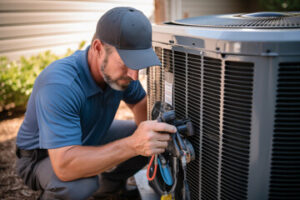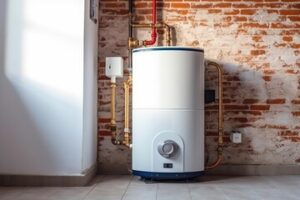Air conditioning systems are complicated machines that require regular maintenance to keep them working properly. AC Services include a thorough inspection and assessment of the equipment.

A technician may evaluate existing ductwork to identify leaks, blockages, and inefficiencies. They will also calibrate the thermostat to maximize energy efficiency and reduce wear and tear. Contact Got Flow Plumbing & AC Services for professional help.
Homeowners today have become increasingly savvy in creating efficient living spaces that inhibit air loss and prevent energy waste. They may use a variety of tools, including insulation, weatherstripping, and double-, triple-, or even quadruple-paned windows, to achieve this goal. While this helps reduce energy bills and improve indoor air quality, it also creates a tight envelope around the house that can trigger airflow issues when an AC system is running. In addition, homes are often built with ductwork that leaks air. When these ducts are not properly sealed, it can cause a reduction in the efficiency of an AC unit.
Inefficient cooling can increase energy demand and contribute to large peaks in electricity consumption that can overwhelm local power grids during hot days. Efficient AC systems that utilize low-GWP refrigerants will be critical to reducing these energy demands. Achieving more efficient cooling requires both technological and policy changes.
The Global Cooling Accelerator, a CCC-led broad-based collaborative with deep technical and policy expertise from RMI, LBNL, NRDC, and AEEE, is working to accelerate the development of superefficient ACs that use lower-GWP refrigerants. The initiative is focused on updating test methods, catalyzing the manufacturing ecosystem, preparing markets and consumers, and building momentum through media outreach and championing early adopters.
One of the most effective ways to ensure your AC equipment is operating at optimum performance is through annual maintenance. Although many homeowners do their own routine maintenance by changing filters, cleaning condenser coils, and ensuring the area around the unit is free of debris, an experienced technician can perform much more in-depth diagnostics, repairs, and tune-ups that are important to your AC system’s long-term performance and lifespan.
For example, a professional can check the refrigerant levels and recharge the system if necessary. This is a job that should only be handled by a licensed, certified professional who has the proper training and tools to handle this delicate task without harming the system. A professional can also clean the interior and exterior of the unit and unclog a drain pipe if needed. This is a job that most homeowners can’t do themselves, as it involves disassembling the unit.
Improved Comfort
Whether your AC has been acting up or you are considering a smart thermostat installation, having an experienced technician perform regular maintenance can ensure that the system will function properly. A professional can test for issues like clogged air filters, evaporator coils that may be growing mold, refrigerant cross-contamination, unresponsive pressure switches, clutch problems and many other potential problems. They can also help you adjust your thermostat settings to reduce humidity levels within your home. These are all vital factors to keep in mind if you want to be comfortable in your home all year round. Our experts are trained to spot any AC complications early on to prevent future damage and expensive repair bills.
Reduced Utility Bills
The best AC services help you save on energy costs by ensuring your system runs efficiently. A professionally installed air conditioning unit uses less energy than an old, faulty system, which in turn decreases your monthly electricity bills. This cost savings continue for the lifespan of your new system, reducing your long-term utility expenses.
Regular AC maintenance can also decrease your electricity consumption by cleaning dirty filters, sanitizing the system, repairing refrigerant leaks and ensuring the thermostat is working properly. Moreover, it can extend the lifespan of your system and prevent costly repairs.
Additionally, if you choose an eco-friendly cooling system that is powered by renewable energy sources like solar or wind, you’ll reduce your carbon footprint and support sustainable energy production. This, in turn, helps mitigate climate change and preserve natural resources. It also demonstrates your commitment to environmental responsibility. Lastly, you can maximize your energy efficiency by pairing your energy-saving AC system with a programmable thermostat that allows you to control your home’s temperature settings remotely for greater flexibility. This way, you can set your air conditioner to use less power during the day while maintaining a comfortable temperature for when you return home. This further lowers your electricity bills by allowing you to take advantage of off-peak energy rates.
Better Sleep
The secret to better sleep varies from person to person, but most experts agree that the temperature and air quality of your bedroom is crucial. Investing in an air conditioning system with a sleep mode feature can improve your sleeping environment and encourage you to get more restful nights of rejuvenating slumber.
The sleep mode feature adjusts your AC system to lower indoor temperatures in the bedroom as you get closer to going to bed. This helps mimic the natural drop in core body temperature that occurs as people prepare to go to sleep, which can enhance your sleep quality.
Using the sleep mode feature will also help prevent you from waking up too hot or cold at night. In the summertime, it can be difficult to open your windows at night because of hot and humid weather conditions, making an AC with a sleep mode feature essential for keeping your home comfortable throughout the night. You can find air conditioning systems with a sleep mode feature that offers programmable controls, so you can set it to your liking as you get ready for bed.


